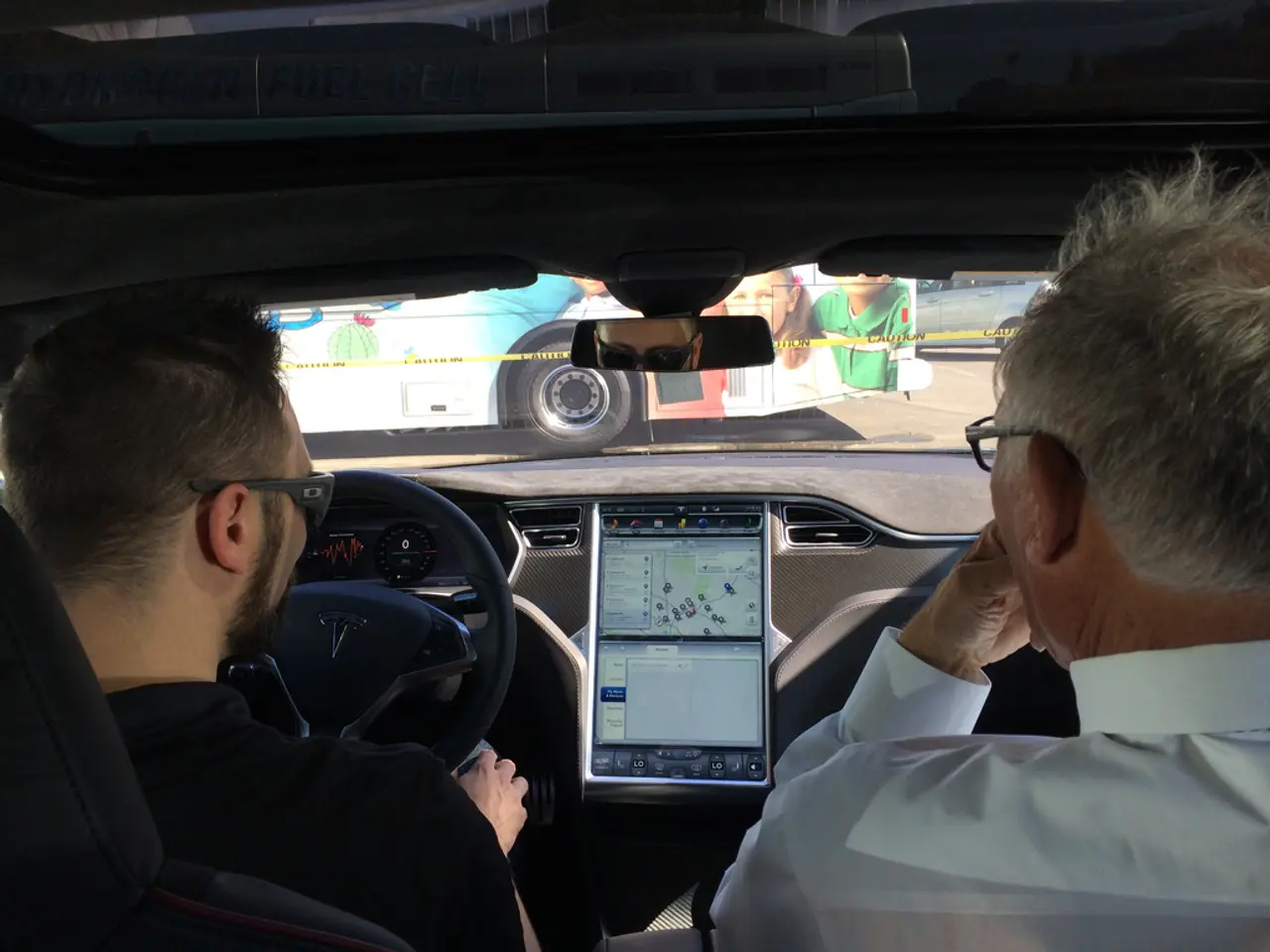AI Capability in Selecting Optimal Roundabout Designs: A Possibility Explored
In a groundbreaking development, Artificial Intelligence (AI) is set to revolutionise the design of roundabouts, optimising traffic flow, safety, and efficiency. By leveraging advanced algorithms and machine learning techniques, AI can simulate various traffic scenarios, analyse data on traffic patterns, road geometry, and user behaviour, and generate optimal roundabout designs.
### How AI Automates Roundabout Design
1. **Simulation and Optimisation**: AI algorithms can simulate different traffic scenarios and optimise roundabout designs to minimise congestion, reduce accidents, and improve traffic flow. This involves analysing data on traffic patterns, road geometry, and user behaviour to generate optimal design configurations.
2. **Machine Learning for Predictive Modelling**: AI models can learn from historical data to predict traffic behaviour under different conditions, allowing them to adjust roundabout designs accordingly. For instance, they can identify peak traffic hours and optimise the design to handle increased traffic volume efficiently.
3. **Integration with Autonomous Vehicle Technology**: AI-designed roundabouts can be integrated with autonomous vehicle systems, ensuring that the design accommodates the unique requirements of self-driving cars, such as precision navigation and real-time data exchange.
### Factors Making Roundabout Design Suited for AI
1. **Complexity and Dynamic Nature**: Roundabout designs involve complex interactions between vehicles, pedestrians, and infrastructure. AI can handle this complexity by analysing numerous variables and optimising designs based on real-time data.
2. **Data-Driven Decision Making**: AI thrives on data. The wealth of data available from traffic patterns, road conditions, and user behaviour makes roundabout design an ideal candidate for AI-driven solutions.
3. **Scalability and Flexibility**: AI can quickly adapt to new scenarios or changes in traffic conditions, making it ideal for dynamic environments like roundabouts. This flexibility allows for continuous improvement and optimisation.
4. **Safety and Efficiency Optimisation**: AI can focus on both safety and efficiency simultaneously, ensuring that roundabout designs are safe for all users while also maximising traffic throughput.
### Current Research and Applications
Recent advancements in AI, such as the development of vision-language models for autonomous vehicles, demonstrate the potential for AI to revolutionise traffic infrastructure design, including roundabouts. These models can enhance safety and understandability of traffic systems by providing real-time explanations for navigational decisions. Additionally, AI-driven multi-agent systems can learn from interactions and adapt protocols to improve traffic flow and safety in complex environments like roundabouts.
One such innovative AI approach is the GFlowNets, which have demonstrated significant success in roundabout design. GFlowNets exceeded other methods on combined diversity and realism metrics, demonstrating the value of guided generative modeling for exploring expansive design spaces. These networks work by incrementally constructing roundabout designs step-by-step, with the sequencing of these constructions learned to maximise a reward tied to realism and lack of collisions.
GFlowNets could successfully generate valid and diverse roundabouts for all road arrangements, with the approximations accelerating training by over 200x compared to simulation-based rewards. Deaths and injuries from collisions at roundabouts are reduced by around 90%. Manually testing roundabout design alternatives is cumbersome and expensive, especially for developing countries. Rule-based methods for roundabout design limit the diversity of designs explored, hindering robustness.
Thorough real-world testing is still required before deploying such tools, but they offer an exciting glimpse into the future of AI-assisted infrastructure design. With the potential to optimise roundabout designs for safety, traffic flow, and cost, AI could provide a more efficient solution for optimising roundabout layout, paving the way for AI design assistants to revolutionise transportation infrastructure design worldwide.
Technology and artificial-intelligence are instrumental in optimising roundabout designs, as AI can simulate various traffic scenarios, analyse data, and generate optimal configurations that minimize congestion and accidents while improving traffic flow (Simulation and Optimisation). Machine learning techniques enable AI to learn from historical data, predict traffic behavior under different conditions, and adjust roundabout designs accordingly (Machine Learning for Predictive Modelling).




